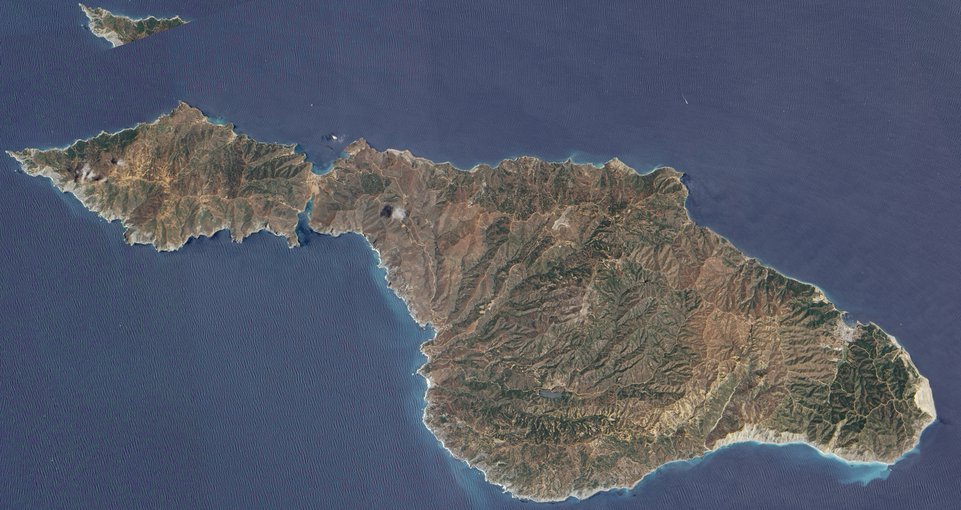-
Genome Sequence of a Chemolithoautotrophic Sulfur and Iron Oxidizer
May 22, 2018 / Written by: Aaron Gronstal
Southwest of the Los Angeles coast lies Santa Catalina Island, a 35-kilometer- (22-mile-) long island that runs roughly northwest to southeast, and spans 13 kilometers (8 miles) at its widest point. Image credit: NASA Earth ObservatoryResearchers have sequenced the genome of Hydrogenovibrio sp. strain SC-1, a microaerophilic neutrophilic iron-oxidizing bacteria. This bacteria was isolated from pyrrhotite, which was incubated in situ in marine surface sediments off of Catalina Island in southern California, USA. SC-1 is the only known iron-oxidizing bacterium in the family Piscirickettsiaceae, and can use energy from the oxidation of iron to grow. Bacteria with this ability are important to the cycling of iron in marine environments, which is an essential trace element that can limit primary productivity in surface waters. In additon, SC-1 is a member of a group of bacteria known for autotrophic thiosulfate oxidation and obligate chemolithoautotrophy.
The study, “Genome Sequence of Hydrogenovibrio sp. Strain SC-1, a Chemolithoautotrophic Sulfur and Iron Oxidizer ,” was published in the journal Genome Announcements. The work was supported in part by NASA Astrobiology through the Exobiology Program and the NASA Astrobiology Institute (NAI).
Source: [Astrobiology at NASA]
- The NASA Astrobiology Institute Concludes Its 20-year Tenure
- Global Geomorphologic Map of Titan
- Molecular Cousins Discovered on Titan
- Interdisciplinary Consortia for Astrobiology Research (ICAR)
- The NASA Astrobiology Science Forum Talks Now on YouTube
- The NASA Astrobiology Science Forum: The Origin, Evolution, Distribution and Future of Astrobiology
- Alternative Earths
- Drilling for Rock-Powered Life
- Imagining a Living Universe
- Workshops Without Walls: Astrovirology